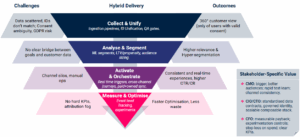Main Challenges Clients Face
The following framework summarises how the most common CDP challenges map to Artefact’s hybrid delivery approach, and the business outcomes that follow when each roadblock is addressed.

Figure 1. From Pain to Payback. Artefact’s CDP Value Framework connects client pain points with a structured delivery approach (Collect & Unify → Analyse & Segment → Activate & Orchestrate → Measure & Optimise). Each stage resolves a critical challenge and drives measurable business outcomes.
While each organisation faces its own unique constraints, most CDP journeys follow this trajectory. Data unification underpins the ability to segment and prioritise; segmentation enables orchestration of journeys across channels; and only with event-level measurement can businesses prove ROI and continually optimise. By linking each challenge directly to a solution layer, the framework ensures CDP investments translate into tangible impact.
1. Data Integration & Unification
Pain points
- Disparate data sources with conflicting identifiers stall identity resolution.
- Inconsistent, incomplete or poorly‑governed data erodes trust and insight quality.
Solution snapshot
Deploy a governed ingestion layer and identity resolution to unify data and deliver a trusted customer 360°.
Best practice: what good looks like
- Establish data governance guardrails (ownership, definitions, lineage, quality rules).
- Automate ingestion pipelines and enforce a common schema to speed integration.
- Deploy deterministic and probabilistic matching to resolve identities with confidence scores.
2. Privacy & Compliance
Pain points
- Tougher privacy regimes (e.g., GDPR) limit the use of personally identifiable information (PII).
- Consent signals (cookies, app tracking) are fragmented and easily overlooked.
Solution snapshot
Embed privacy‑by‑design workflows and consent management to ensure compliant, permissioned data flows across every CDP stage.
Best practice: what good looks like
- Map every data flow against legal basis, retention and purpose.
- Select a CDP with native consent management and data‑minimisation controls.
- Institute a cross‑functional privacy council to review use cases before launch.
3. Use Case Identification & Prioritisation
Pain points
- Teams drown in possibilities and pursue “shiny object” use cases that never launch.
- Misalignment between Marketing, Data and IT stalls decision‑making.
- Data limitations surface late, derailing timelines.
Solution snapshot
Run impact vs feasibility scoring workshops and maintain an Agile backlog so quick win use cases land first and fund the roadmap.
Best practice: what good looks like
- Score potential use cases on impact, feasibility and complexity.
- Start with “small win, high value” plays such as lead nurture and paid media look-alikes.
- Review outcomes quarterly and graduate to advanced plays (LTV modelling, omnichannel orchestration).
4. Organisational Silos
Pain points
- Functions operate on different platforms, fragmenting the customer view.
- No shared KPI framework, so marketing messages and service actions collide.
Solution snapshot
Stand up a cross‑functional CDP squad with shared OKRs and bi‑weekly showcases to align teams and speed adoption.
Best practice: what good looks like
- Publish a shared data dictionary and customer contact policy.
- Integrate CDP insights into daily workflows (e.g., CRM screens, paid media audiences).
- Foster executive sponsorship to remove blockers and celebrate early wins.
5. Vendor Selection & the Rise of the Composable CDP
Pain points
- Feature checklists obscure fit with existing architecture.
- “Big bang” deployments consume time, budget and goodwill.
Solution snapshot
Adopt a composable architecture and run a low risk PoV integrating two priority data sources before full rollout.
Best practice: what good looks like
- Choose vendors that expose open APIs and play nicely with your cloud warehouse.
- Begin with a PoV integrating just two or three data sources.
- Invest in enablement: certify internal users and appoint product owners.
6. Measuring Success & ROI
Pain points
- Vague or vanity metrics make it impossible to prove value.
- Attribution across channels remains elusive.
Solution snapshot
Build an event level measurement layer with control groups to quantify incremental contribution and feed optimisation sprints.
Best practice: what good looks like
- Tie CDP objectives to business outputs: incremental revenue, media efficiency, churn reduction.
- Build a transparent measurement framework with control groups and time series baselines.
- Feed results back into the backlog to refine the roadmap.
Real-world Impact from Artefact Clients
By better leveraging 1P data and effectively implementing CDP, we have seen our clients achieve significant benefits. Results observed on 30+ Artefact projects between 2019 and 2023:
- Efficiency: -30% in media cost
- Growth: +10% incremental sales on digital channels
- Engagement: +20% Quality metrics (engagement rate, CLV, NPS)
- Test & Learn:
- x4 upskilling pace & learning agenda iterations
- -50% time to insights
Conclusion
Implementing a CDP is a significant step toward delivering smarter, more personalized experiences, but it is not without its hurdles. From data integration and privacy concerns to organisational silos and unclear ROI, challenges abound. However, with thoughtful planning, strong governance, and strategic execution, organisations can overcome these obstacles and realize the transformative potential of a CDP.
By aligning on business goals, breaking down silos, and embracing a value driven approach, companies can unlock rich insights, foster customer loyalty, and ultimately drive growth.

 BLOG
BLOG






